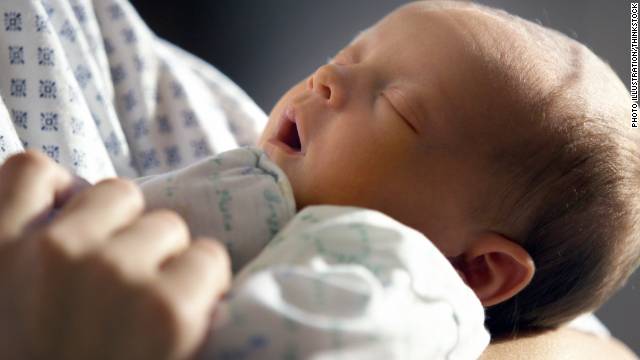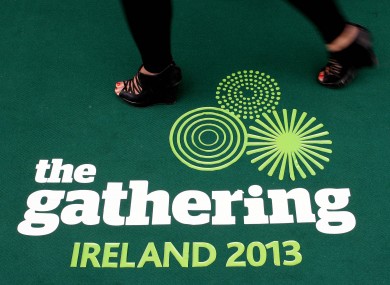Grafton Group reports first Irish growth since in six years


GRAFTON, THE DIY AND BUILDERS SUPPLY GROUP, TODAY REPORTED GROWTH IN THE FIRST SIX MONTHS OF 2013 IN ITS IRISH BUSINESS FOR THE FIRST TIME SINCE 2007.
Grafton Group: Solid statement with trading in line with expectations;Appointment of new FD; Robert Eason of Goodbody comments [Grafton Group has issued a trading update for the six months to the end of June and has guided revenues of €1.07bn (up 1-2%). This is in line with our expectations of €1.065bn, with the mix slightly different (a strong Irish Retail performance offsetting a slightly weaker than expected UK lfl). In addition, operating profits for the first half are expected to be “in line with market expectations”.
The main points at a divisional level are:
(i) Lfl sales in UK merchanting (74% of group sales) were ahead 1.7% (versus forecast of 2.0%) with “stronger demand during May and June”. This compares to comments for Jan-Apr that sales were “marginally ahead”; (ii) Irish Merchanting (13% of group revenues) sales increased by 1% in the period (versus 1% Jan-Apr and broadly in line with expectations), benefiting from share gains and internal initiatives. This represents the first period of growth since 2007; and, (iii) Irish Retail (9% of group sales) revenues were flat in the period which reflects a marked improvement from the first four months (-8.7%) which were impacted by adverse weather.
Overall, this is a solid statement and shows that management continues to progress operating profits in an environment of limited sales growth, thereby highlighting the on-going benefits of self-help. We are unlikely to make material changes to FY forecasts for operating profits of €84m (+12% yoy). We remain positive on the stock given an improving outlook in the UK, continued self-help and the prospect of a recovery in Ireland.
Separately, following the announcement in March of Colm O’Nuallain’s retirement, the company has announced the appointment of David Arnold (47) as Group FD and he will be joining the Board from 9th September. His previous positions include: Group FD of Enterprise plc (a support services company), from 2010 until its disposal by 3i to Ferrovial in Apr-13; Group FD of UK housebuilder Redrow from 2003 to 2010; and prior to this he was Treasurer in Six Continents plc (leisure and hotels group) and held a number of senior financial positions at Tarmac Plc."
State should stick with austerity says the ESRI
Think tank’s medium-term report urges Government to proceed with €3.1 billion cuts-and-taxes plan
The Economic and Social Research Institute has this morning called on the Government to go ahead with the planned €3.1 billion in spending cuts and tax increases in Budget 2014.
The think tank believes that, given the very considerable risks the economy faces, the most prudent course of action is to stick to the current adjustment plan.
“As new information becomes available, policy can then be adjusted,” it adds. “It is easier to relax fiscal policy if things turn out better than expected rather than to tighten it if things turn out worse.”
Both trade unions and employers have in recent days called on the Government to ease the pace of budgetary adjustment next year.
Final austerity budget
In its five-yearly medium term review, the institute’s economists write that the 2014 budget could be the last austerity budget if the international economy picks up and banking problems are resolved.
In its five-yearly medium term review, the institute’s economists write that the 2014 budget could be the last austerity budget if the international economy picks up and banking problems are resolved.
In the best-case scenario presented in the 137-page report, the Government could abandon the €2 billion adjustment currently pencilled in for 2015. A neutral budget in 2015 would be the first such budget since 2008.
However, if the worst of the three scenarios it sets out up to 2020 comes to pass, austerity would continue for the rest of the decade. In that scenario, unemployment would remain in double digits until 2020 and emigration would continue.
Speaking at a briefing yesterday, Prof John FitzGerald noted that, as education levels are much higher now than in the 1980s and 1990s, the last time unemployment was high, joblessness should fall more quickly when recovery kicks in. However, he said “the bottom 30 per cent” in terms of educational achievement are vulnerable to becoming stuck in long-term unemployment.
External shocks
The study, which aims “to explore how domestic policy can improve the possible outcomes”, also states the Irish growth model is vulnerable to external shocks. As such, it will be important the driving force behind the export sector “moves gradually away from businesses that are dependent on the low corporate tax regime to businesses that rely on other aspects of Ireland’s competitive advantage”.
The study, which aims “to explore how domestic policy can improve the possible outcomes”, also states the Irish growth model is vulnerable to external shocks. As such, it will be important the driving force behind the export sector “moves gradually away from businesses that are dependent on the low corporate tax regime to businesses that rely on other aspects of Ireland’s competitive advantage”.
The authors admit they underestimated the risks in their last medium-term review, published five years ago as the property bubble had begun to deflate. “The diverse scenarios presented in previous reviews did not properly capture the full severity of the recent crisis,” the report states.
Dancing Taxi-man clip used by the Gathering to entice tourists
A Taxi driver's impromptu street dance with a top political adviser has been used by The Gathering to promote Ireland.
Cabbie Wayne Karney was looking for fares when he came across a street party in Dublin's city centre.
And within seconds, he was out of his car and dancing with Andrea Pappin – spokeswoman for Ireland's presidency of the EU – to Daft Punk's Get Lucky.
Some 250,000 people have now viewed the YouTube clip, which has also been broadcast by the American network CBS.
The Gathering, the Government's tourist initiative, tweeted a link to the footage, saying: "Coming to Ireland? Expect the unexpected!"
On its website, CBS News described it as a case of "music and the bizarre" colliding.
CBS journalist Will Goodman writes: "I've just got to throw out that if I ever travel to Ireland and end up in that particular cab, I'm just going to ask him to take me wherever it is he's going. (Because that's obviously where the party is happening!)"
Many of the people in the cheering crowd were diplomats celebrating the end of the Ireland's presidency of the EU.
When contacted yesterday, Ms Pappin did not wish to comment.
Wayne said: "It was at the back of (South Great) George's Street. It was pumping music. I just happened to drive up that street and this girl started dancing. I couldn't get by.
Laugh: "There were a lot of people and there was dance music on. This girl was dancing in front of the car. Everyone was having a laugh."
It happened outside Dame Tavern at about 8.30pm last Friday as people workers and visitors enjoyed the sun.
"There were about 500 people there. The whole street was full," he added.
Irish researcher's proves link between bullying and mental illness


IRISH PSYCHIATRISTS HAVE PROVED A DIRECT LINK BETWEEN BULLYING AND LATER MENTAL HEALTH PROBLEMS, RESEARCH HAS REVEALED.
Royal College of Surgeons Psychiatry Professor Mary Cannon told the Irish Mirror: “Our findings are the first to show there is direct evidence between exposure to childhood trauma and psychotic experience.
“Furthermore, it showed that the end of traumatic experiences was associated with a significant reduction in the incidence of psychotic experiences.
“What we’re showing in this research is that bullying is happening mainly in school and 10% of physical assault is happening at school.
“The highest proportion for assault was by someone the child knew in school, so it shows if schools intervened early it would eliminate a lot of the traumas.”
The study found episodes of psychosis such as hearing voices were an issue of concern.
A total of 1,112 school-based teens aged from 13 to 16 years old were assessed at the start of the study, after a three-month period and again after 12 months.
During this time, they were surveyed about physical assault, bullying and psychotic experiences.
Prof Cannon added: “The children were given a six-item questionnaire about bullying and the more of those questions the young person said ‘yes’ to, the more likely they were to later report hearing voices or having some kind of psychotic experience.
“It showed that the stronger the level of bullying, the higher the risks of these kind of problems.
“Questions about teasing, others taking things from you and have people been calling you names were among the six.
“We know that bullying is associated with higher rates of depression, anxiety and self-harm but recent evidence has shown that bullying is linked to other symptoms like hearing voices.
“One in five children will experience hearing voices at some point and there are a minority of children who go on to have serious problems in adulthood and we need to look out for this.
“If you do something about these traumas then you can also help the child in terms of their psychological well-being.”
Lead researcher Dr Ian Kelleher added: “The research found that classmates were the largest group inflicting physical harm.
“Additionally, as most bullying takes place within the school, teacher training could have a very important role to play in reducing this harm.”
The findings were presented at the European Society for Child and Adolescent Psychiatry Congress in Dublin.
They will also appear in this month’s American Journal of Psychiatry.
Why our state of health in later life may be set before birth


Your long-term health and rate of aging may already be determined when you’re in the womb, a new study has found.
Published in the International Journal of Epidemiology, the study showed that 22 metabolites in the blood – chemical “fingerprints” from before birth or in infancy – are linked to aging and could predict how susceptible a person is to having an age-related disease later in life.
The researchers found that a higher concentration of these metabolites in the blood was directly related to higher blood pressure, lower bone mass and lower lung capacity.
One of the 22 metabolites – C-glyTry – is linked to aging traits such as lung function and bone mineral density, and is strongly associated with birth weight.
Exploring the link between C-glyTy and birth weight, researchers were able to show that the gene influencing the metabolite levels could be modified epigenetically (genes are switched on and off, triggered by a person’s environment or lifestyle). Those epigenetic changes might influence metabolism during that person’s lifetime, which would then influence their risk of age-related disease.
“This unique metabolite, which is related to age and age-related diseases, was different in genetically identical twins that had very different weight at birth,” said Ana Valdes, lead researcher at King’s College London.
“This shows us that birth weight affects a molecular mechanism that alters this metabolite. This may help us understand how lower nutrition in the womb alters molecular pathways that result in faster aging and a higher risk of age-related diseases 50 years later.”
The team of researchers looked at people between the ages of 18 to 85. They found the older participants tended to have higher concentrations of metabolites in their blood.
Someone aged 55 with a higher concentration of these metabolites would be older – not chronologically, but in terms of aging – than someone the same age who didn’t have the same metabolite presence.
“The key question was, ‘What makes people age?’ not chronologically, but what makes people age or stay young, and what is the molecular basis of aging? That’s really the underlying basis of it,” Valdes said.
She said the study showed it might be possible to look at these markers of aging with simple blood tests in the future.
If someone had a high concentration of these metabolites and showed they may be at higher risk for high blood pressure, it would be possible for doctors to target treatment for that specific issue.
 “What is going on with a person in their 20s and 30s that we might be able to influence?” Valdes said.
“What is going on with a person in their 20s and 30s that we might be able to influence?” Valdes said.
“Maybe it might be just losing weight, or it might be a drug, or it might be gene therapy. Whatever it [the thinking] is, is there something we can do when people are in their 20s, 30s, 40s that means when they are 50, 60, 80, they are not going to have as high risk of fracture?”
Another study found that what happens in the womb can have lasting effects on a person’s stress levels. When a female is exposed to distress while pregnant, this can cause changes in the expression of a gene linked to the stress mechanism in her baby’s body.
This study was from the University of Haifa and found that female mice that were exposed to “minor” stress, including changes in temperature and daily routine for a week, passed that stress on to their offspring; immediately after birth, the newborns had an enhanced expression of the CRF-1 gene (which is linked to the body’s stress-control system).
The study provides insight into what mothers who go through stressful situations may pass on to their children.
“We are learning more and more about intergenerational genetic transfer,” the researchers said, “and in light of the findings, and in light of the fact that in today’s reality many women are exposed to stress even before they get pregnant, it’s important to research the degree to which such phenomenon take place in humans.”
Choir singers ‘synchronise their heartbeats’ in unison

Choir singers not only harmonise their voices, they also synchronise their heartbeats, a study suggests.
Researchers in Sweden monitored the heart rates of singers as they performed a variety of choral works.
They found that as the members sang in unison, their pulses began to speed up and slow down at the same rate.
Writing in the journal Frontiers in Psychology, the scientists believe the synchrony occurs because the singers coordinate their breathing.
Dr Bjorn Vickhoff, from the Sahlgrenska Academy at Gothenburg University in Sweden, said: “The pulse goes down when you exhale and when you inhale it goes up.
“So when you are singing, you are singing on the air when you are exhaling so the heart rate would go down. And between the phrases you have to inhale and the pulse will go up.
“If this is so then heart rate would follow the structure of the song or the phrases, and this is what we measured and this is what we confirmed.”
Sing from the heart
The scientists studied 15 choir members as they performed different types of songs.
When you exhale you activate the vagus nerve… that goes form the brain stem to the heart”
They found that the more structured the work, the more the singers’ heart rates increased or decreased together.
Slow chants, for example, produced the most synchrony.
The researchers also found that choral singing had the overall effect of slowing the heart rate.
This, they said, was another effect of the controlled breathing.
Dr Vickhoff explained: “When you exhale you activate the vagus nerve, we think, that goes from the brain stem to the heart. And when that is activated the heart beats slower.”
The researchers now want to investigate whether singing could have an impact on our health.
“There have been studies on yoga breathing, which is very close to this, and also on guided breathing and they have seen long-terms effects on blood pressure… and they have seen that you can bring down your blood pressure.
“We speculate that it is possible singing could also be beneficial.”




No comments:
Post a Comment